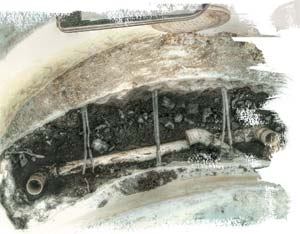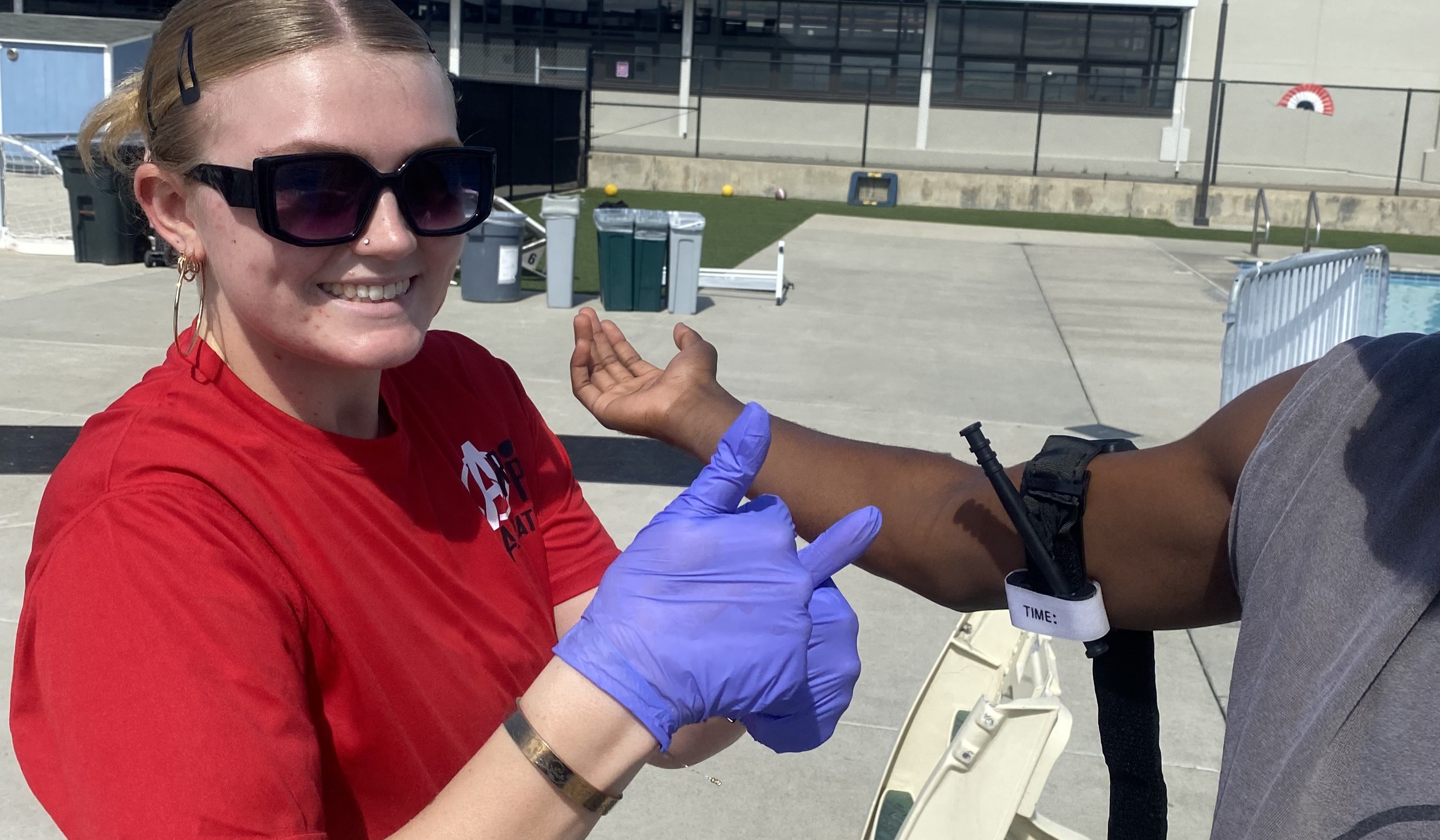MORE INFORMATION
- In Complete Compliance
Steps to ensure that the drains are entrapment-proof and adhere to the new federal law.
- Drain Diagrams
See what not to do when installing dual main drains.
Javier Payan has had a change of heart.
When the Virginia Graeme Baker Pool and Spa Safety Act first passed, the president of Payan Pool Service in El Cajon, Calif., agreed with many in the industry.
“I thought this was a complete waste of everyone’s time, money and effort,” he says. “I thought this was not necessary, that it was a knee-jerk reaction to a problem that’s not as rampant as it’s been played out to be.”
Then he and his crews began conducting the site evaluations necessary to help bring public pools into compliance. “I think we stopped counting at about 250 projects,” he says. “I’ve seen enough stuff to really scare me to say, ‘This is the best thing to happen to the pool industry in a long time.’ Now it gives us a chance to actively go out and correct problems and make [the pools] that much more safe than they already were.”
Having a federal law in place forces a spotlight on the whole issue.
“It’s not always just about changing out plastic,” he says. “It’s looking at the whole system.”
Part of that system is the setup of dual main drains. It’s not enough to just place the drains 3 feet apart and call it a day. Other factors come into play as well.
Here, professionals provide a look at how to fine-tune dual-drain systems so they run perfectly and safely.
Finding balance
Simply having two main drains may not be enough to prevent a vacuum from forming. First, the plumbing must be sized so the water moves no more than 6 feet per second through the drain. Without that basic step, all other efforts are basically laid to waste.
Next, the flow entering the openings should be balanced, as stipulated by several codes, including the International Residential Code, International Building Code, and some state and local codes. Balanced drains make for a more efficient pool and, some believe, a safer one.
There is some debate as to how important this balance is for safety. Some believe an unbalanced system renders all other entrapment-prevention efforts useless.
“The whole idea is if you block one [drain], there shouldn’t be a suction lock, because everything’s going to be drawn through the other drain,” says Alison Osinski, president of San Diego-based Aquatic Consulting Services. “But if they’re not balanced…you still could have a suction lock.”
However, not everyone sees it the same way. Steve Barnes, safety and compliance manager for Sanford, N.C.-based Pentair Water Pool and Spa, believes that, while it’s good practice, balancing the drains isn’t completely necessary for safety, as long as they are within 5 to 6 feet of each other.
“It’s when you get into the bigger pools where [the drains are] really spread out, or one’s on the floor of the pool and another is up on the wall, that it becomes important,” says Barnes, who is also chairman of APSP’s Technical Committee. “It’s not a jackhammer-the-floor or a red-tag-a-pool problem if they’re not balanced, but it is definitely good building practice to balance them.”
The practice of balancing the drains was developed back when codes and standards allowed drains and their covers to handle only half the pump’s flow. You needed to balance the drains then because otherwise, one drain would have to accommodate more than half the flow. Now, because ASME A112.19.8 states that each drain cover must be able to handle the full flow generated by the pump, balance becomes less important for safety.
Even distribution
That debate aside, balancing the drains is still an important practice — not only for code compliance but also for system efficiency. To ensure balance during new construction, builders should feed water through the trunk line, and place a tee in the middle of the two drains. This way, half the flow diverts to each side.
Another vital rule in placing dual drains says they should not be put in series with the tee at one end (see Illustration A). With this configuration, suction draws most heavily from the drain closest to the tee — in this case “A.” It’s the same principle that happens when a builder fails to manifold spa jets or pool returns: The pump will pull as much as possible from drain A, but not as much from drain B because it’s farther away. If drain A is blocked, then a vacuum may occur because drain B can’t draw enough water to compensate.
Instead, the tee should be placed midway between the two drains. If the units are less than 6 feet apart, it’s OK to eyeball the distance and place the tee approximately in the middle. But when there is more distance between the drains, the placement of the tee should be mapped out precisely.
In plumbing the drains, be sure to use the same size pipe from the tee to each outlet. Service professionals have reported seeing pools with 1 1/2-inch plumbing on one side and 2-inch on the other. If you find that to be the case on a retrofit, be sure to fix it.
“With 2-inch PVC pipe, you’re able to run about 84 gallons per minute, where on 1 1/2-inch, [it’s closer to] 51 gallons per minute,” says David Weil, owner of David Weil Pool Service in Simi Valley, Calif. “If somebody blocks off the 2-inch side, you then have 84 gallons per minute trying to be pulled through the 11/2-inch pipe. It’ll start cavitating and causing more issues, cause more of a venturi in the pool on that side of the pipe.”
A larger problem can occur if either or both drains are placed too far from the tee. Extra distance means extra suction, so installing the drains too far away could create a high-vacuum situation caused by the high head loss. In Illustration B, if drain B is significantly farther from the tee than drain A, then the pump can’t overcome the distance and pull much flow through B. If, for some reason, drain A were to become blocked, an entrapment could occur because the pipe for B won’t be able to pick up the slack.
The APSP Technical Committee is currently researching the distance at which a problem occurs. In recent testing, the group looked at what happens when drains are placed 30 feet from the tee. At that distance, sufficient flow could not be pulled through the drains (Illustration C). However, that’s an extreme example, and more research will have to be done to zero in on when problems start to occur. To play it safe, the drains should be no more than 8 feet from the tee, Barnes suggests.
On-site testing
During compliance inspections, retrofitters should try to assess how the dual-drain system has been designed.
First, check to make sure the drains are connected at all. One could have been blocked during plastering, or by the accumulation of debris. In addition, an unscrupulous renovator could have intentionally installed a second drain that leads nowhere, just to make the pool appear compliant.
“I’ve seen [those kinds of] fake-outs, where they were really just two single main drain systems, and they weren’t actually what you were looking at,” Payan says.
To ascertain if a dual drain system is functioning, force air or water through one drain and see if it comes out the other. Some renovators also try forcing air though a skimmer to see if it comes out through both drains. You can also place rubber mats over the drains while the pump is running. If the mat sticks to both drains, then you know both are working. However, if the mats stick so tightly that they can’t be pulled off, and you hear excessive noise from the pump, you’ve caused a vacuum. This probably means each drain is connected to a different pump.
It’s more difficult to determine whether the system is balanced, although the previous test can help. If no air comes out of one outlet, or a lot more escapes from one than the other, that could indicate a problem. For additional insight, obtain a copy of the pool plans, look at the plumbing layout and consult the pump charts to determine how much flow should be moving through each, based on the pipe size.
There’s another test coming on the horizon that involves a device called a manometer. The home-made tool, developed and tested by the ANSI/APSP-7 Committee, measures a drain’s hold-down force. It is made using a plastic salad bowl, clear tubing and a barbed fitting. The professional drills a hole at the very bottom of the bowl, in the center. The tubing fits through the hole, and is secured with the barbed fitting to create an air-tight seal.
To use it, technicians turn off the pump and block one drain. Next, they place the bowl upside down on the other drain, with the tube breaking the water’s surface. The tube will fill with water. Finally, the pump is turned on, which causes the water in the tube to drop. The tech measures the distance of the drop, then consults a chart to convert that measurement to pounds of pull. The maximum allowed force is 15 pounds.
A similar tool can be made with a rubber mat taking the place of the salad bowl. An upcoming appendix, expected to be released in late summer, to the ANSI/APSP-7 Suction Entrapment Avoidance Standard will provide detailed instructions on how to use these tools.
By checking each drain, a technician can determine whether the drain is appropriate, and also whether the system is balanced. If not, some health inspectors may require you to tear out and fix those drains.



